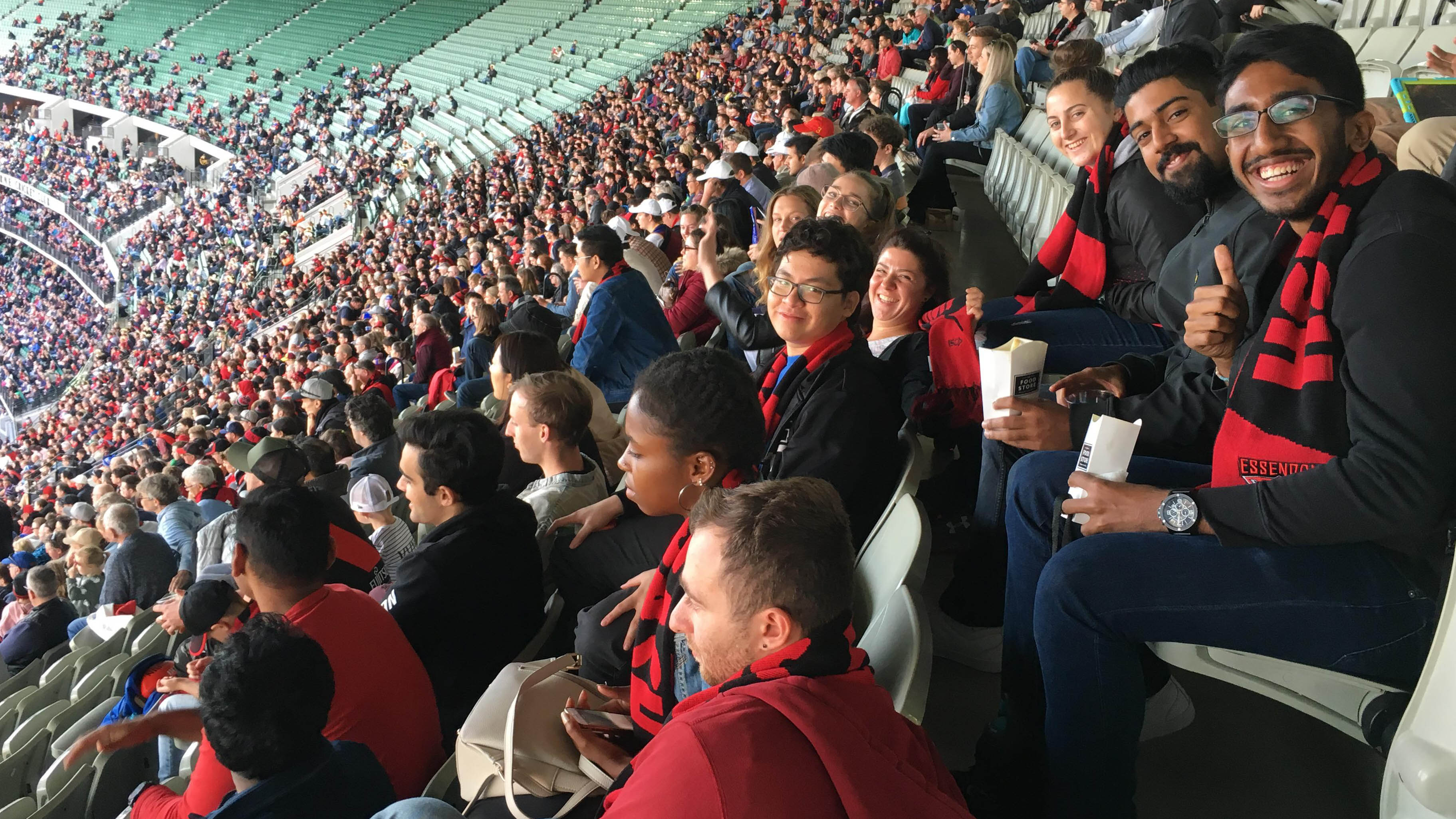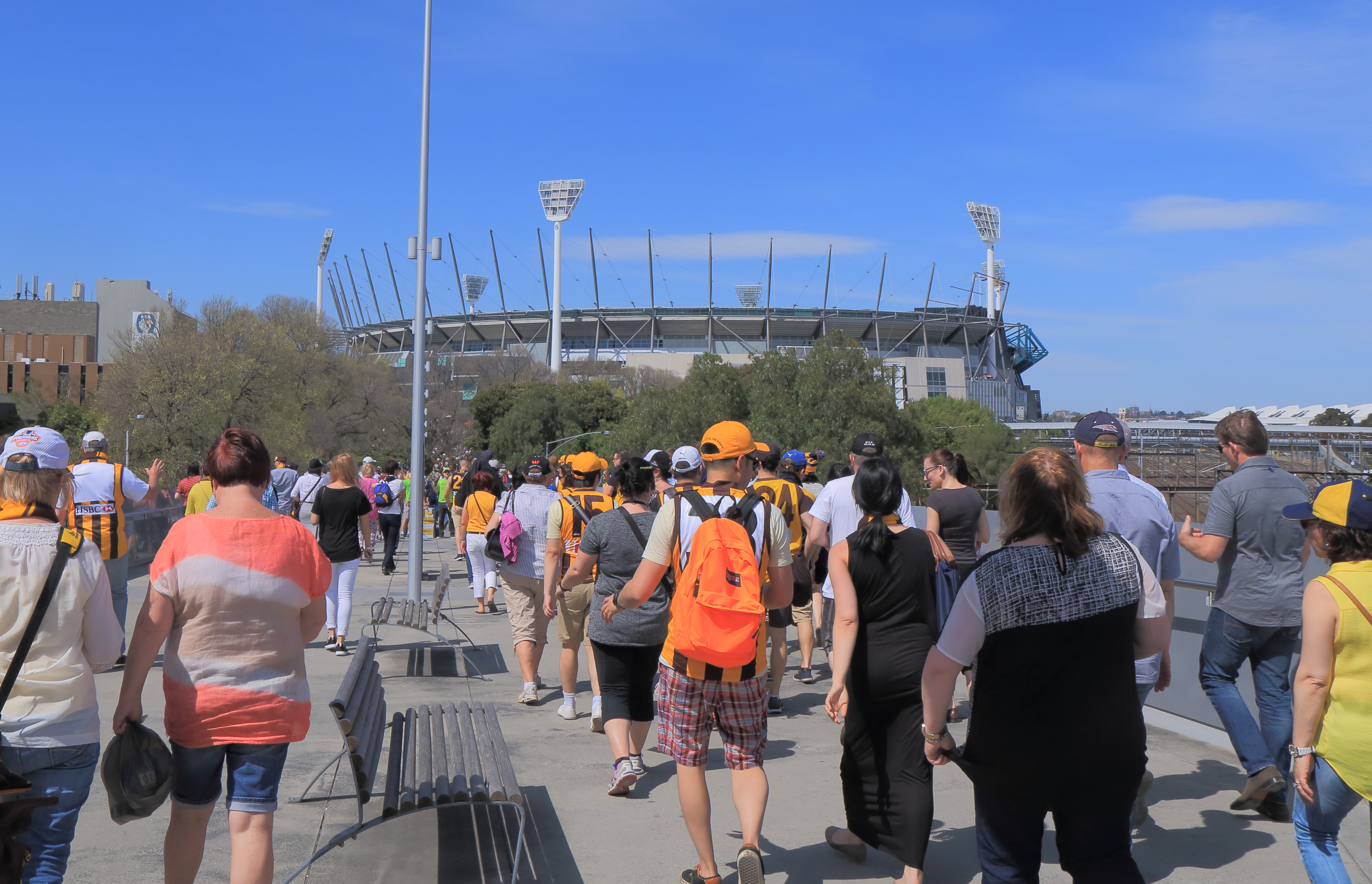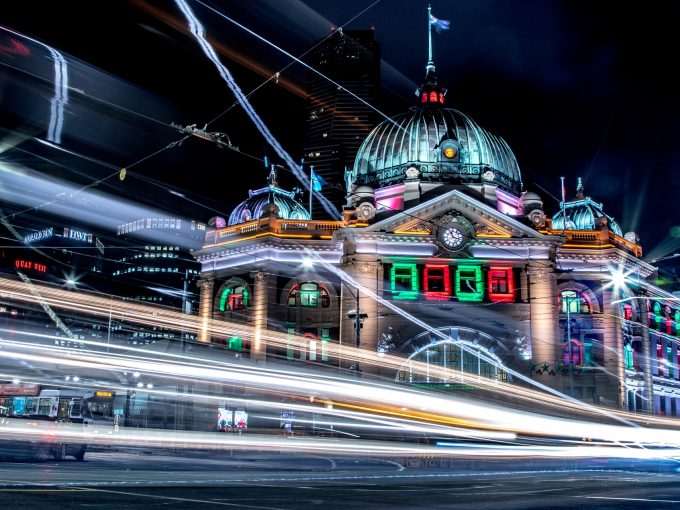Fans across Melbourne are thrilled for the return of AFL, but with capacity caps on games and other restrictions on attendance, how will fans engage and experience the return of the AFL?
2021 will be an important transition year back to normal, especially for sports.
While most Melburnians will welcome the opportunity to cheer on their team at the MCG or Marvel Stadium, crowds returning to AFL depends on their capacity to break the ingrained ‘stay-in’ behaviours formed in lockdown, says Dr Meg Elkins from School of Economics, Finance and Marketing.
“Cultural and sports participation is strongly linked to higher levels of subjective wellbeing,” says Elkins.
“The hangover from COVID means that we are avoiding the group behaviours that previously make us feel connected and happy.
“Sports viewing is usually better on television but we attend sporting events to enjoy the experience of the crowd.
“If cumbersome protocols such as checking in with QR codes, social distancing and mask wearing diminish that experience we might just avoid the inconvenience all together and stay on the couch.
“Melburnians will need social proof that returning to sporting events will be a better experience than watching from our lounge rooms.”

There is also concern that navigating public transport may reduce our willingness to engage with the full AFL experience.
Liam Davies, PhD at the RMIT Centre for Urban Research says there will still be some physical distancing challenges with so many people going to the ground and home again safely.
“For recent sporting and public events, the State Government has run more trains and trams to make physical distancing possible and should continue to do so – but fans also have a role to play,” says Davies.
“As a precaution, the usual throngs of people at railway stations and tram stops should be avoided.
“For fans who can walk or ride, taking that option will provide more space on public transport for those who live further away.
“On top of wearing masks, fans who do use public transport should consider getting to the game earlier and leaving later.
“You could go for a walk or have a kick of the footy in one of Melbourne’s many wonderful parks before or after the game or grab a bite to eat with friends.
“Spacing out our public transport travel will give everyone the space they need to travel safely, while enjoying the footy, our city and helping out some small businesses at the same time.”

While getting people back in the stadium is a high priority to help revitalise the CBD again, marketing expert Associate Professor Con Stavros says sporting bodies will need to make entertainment their primary focus and give fans a reason to re-engage.
“Sport is ritualistic – it brings people together, whether that’s in front of a screen or a stadium, and that’s critical,” says Stavros.
“Reports indicated that very few people wanted a refund on their membership in 2020, despite not being able to attend games.
“AFL memberships are sold as an emotional attachment, but there’s a limit and 2021 will really test that.
“It also brings a critical rhythm to the week and when you tinker with it, it’s dangerous because it removes routine and comfort, including entrenched behaviours that go back decades.
“Suddenly, without the normal rhythm and pattern of sport, people start to engage in other forms of entertainment, like video games or Netflix.
“The leagues with the biggest challenges are potentially those around the A-League, rugby union, netball and basketball.
“While the AFL and NRL dominate the media landscape, other competitions must battle for their share of what is an increasingly crowded marketplace.
“There’s so much saturation in the Australian sporting market, let alone international events we also keenly follow. It’s hard enough to thrive in the best of times, let alone COVID times.”
Story: Chanel Koeleman and Caleb Scanlon





